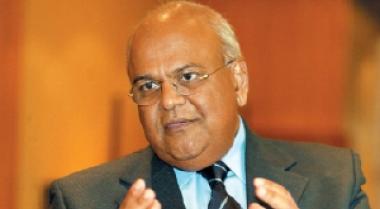Gordhan sees dip in SA’s 2011 GDP
 Minister Pravin Gordhan.
Minister Pravin Gordhan.
SA’s Gross Domestic Product for the rest of 2011 has been revised downward to 3.1%, a somewhat lesser projection than the one announced at the time of the budget in February 2011
In his Mid Term Budget Policy Statement (MTBPS), the Finance Minister Pravin Gordhan today reiterated that the slowdown in the world economy and continuing uncertainty associated with the unresolved European debt crisis and sluggish growth in the US had to be taken into account.
“We saw a gradual recovery last year and an annualised GDP growth rate of 4.5% in the first quarter of this year, but in the second quarter growth slowed to 1.3%.
“For 2011 as a whole we now expect growth of 3.1%, which is somewhat below the projection at the time of the Budget in February. For the period ahead, growth is expected to be 3.4% next year rising to just over 4% in 2014 and 2015.
Gordhan said that global trade and growth at present were mainly driven by continuing expansion in China, India and other fast-growing developing countries.
Advanced economies are expected to grow by 1.6% on average this year, rising to 1.9% next year, he said, taking into account population growth, this is, at best, standing still.
He also pointed out to developing Asia and that it will continue to grow at over 8% a year, while Sub-Saharan Africa is projected to grow by between 5 and 6% a year.
SA’s current account deficit of the balance of payments will average about 4% of GDP. Consumer price inflation has increased over the past year, and is expected to stabilise at about 5.5% a year.
On household spending, Gordhan said that it had recovered strongly since the
2009 recession and household debt remains high, but private sector capital formation in 2011 is still well below its 2008 peak.
Also below its 2008 level were exports, which are still more than 15% below their volume, whereas imports are near their all-time high.
The Minister of Finance said the government does recognize also that the volatility of the rand remains a difficulty for many businesses in the tradable goods sectors.
“The currency has traded in a range of R6.58 to R8.25 to the US dollar this year, with volatility clearly linked to global financial turmoil. The rand weakened by as much as 7.5% against the US dollar in one day during September, before strengthening by 5.4% on another.
“Depreciation in the rand in recent months has brought some relief to manufacturers, though it has also contributed to some upward pressure on prices. Of particular importance is the trend in food prices,” the minister said.
He said trends in the labour market indicate the magnitude of the economic challenge ahead with real wage levels having increased in both the public and private sectors, but the pace of job creation has been far too slow.
“In the fifteen months to March 2010, 426 000 jobs were lost in the formal non-agricultural economy, and the estimated overall loss of jobs was more than double this.
“In the subsequent fifteen months of recovery to June this year, just 210 000 jobs were created, mainly in the public sector.”
The MTBPS 2011 proposed a competiveness support package of R25bn over the next six years to boost industrial development, assist enterprises and accelerate job creation.












